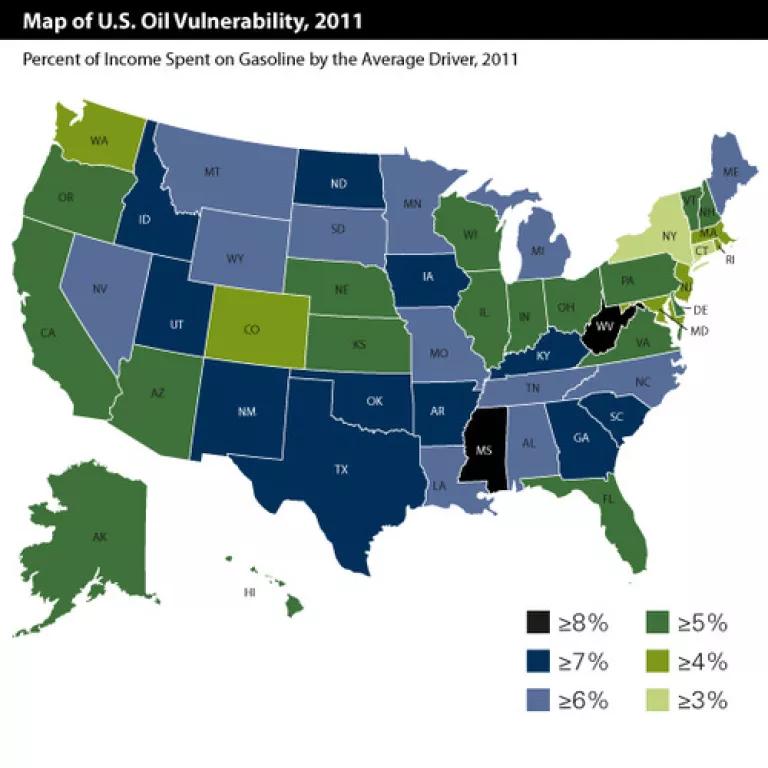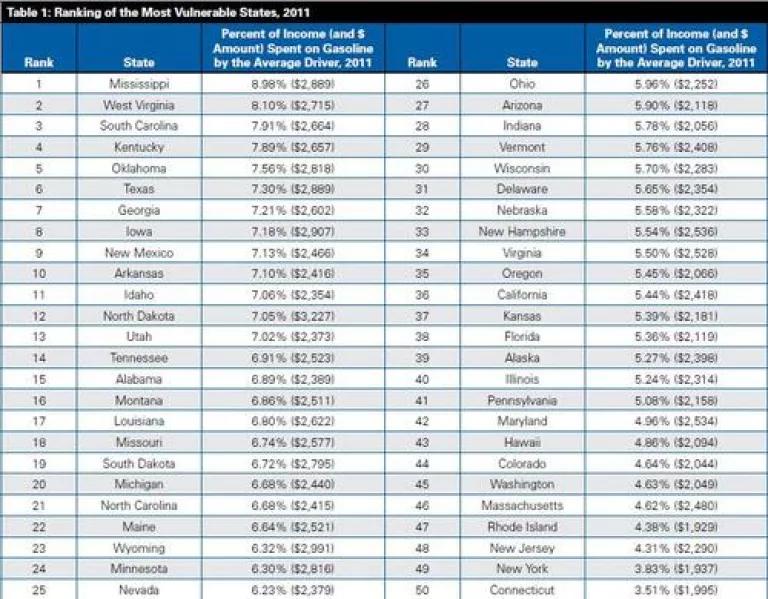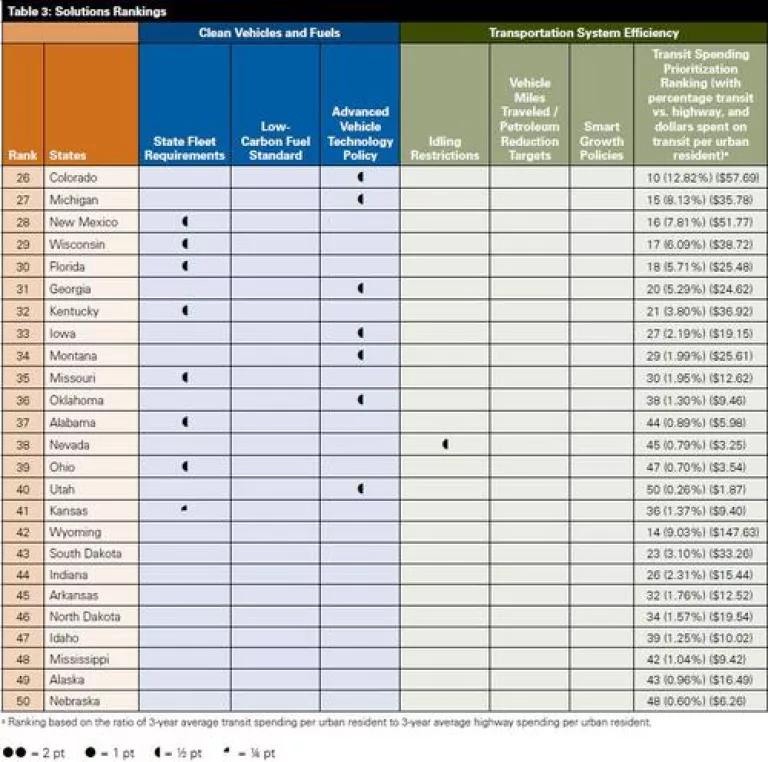
Looking beyond the top of the ticket, we see big changes in states with 11 new governors elected and (according to Governing magazine) a dozen legislatures moving either rightward or leftward. The governor’s office in North Carolina switches parties with pro-transit, former Charlotte Mayor Pat McCrory taking the reins. And New Hampshire (my wife’s home state) saw seismic change with 115 seats flipping to the Democrats.
Everyone stepping up to the plate as a newly minted state leader, no matter what party or state, should focus like a laser on reducing our dangerous addiction to oil.
The federal government acted a lot in 2012. On the one hand, the Obama Administration made history with a once-rusty but tried-and-true policy tool: Fuel-efficiency standards. As my colleague Roland Hwang writes, pushing the performance bar for the average new vehicle to 54.5 miles-per-gallon by 2025 is “Washington at its best.” This move will dramatically reduce oil dependence nationally by saving millions of barrels of oil daily. It will also make us less vulnerable to oil price fluctuations and spikes in two ways: 1) Cutting the amount of gasoline we have to use to make our daily rounds and 2) Increasing competitiveness of vehicle options such as the Prius plug-in hybrid which I bought this month, making it possible to fuel-switch if price jumps.
This last point is crucial. There is a lot of loose talk about “energy self-sufficiency” currently, and it is true that dramatic increases and vehicle fuel-efficiency and possible increases in oil production could slash oil imports. However, we remain part of a global liquid fuel marketplace. Theoretical self-sufficiency or not, we will be beholden to globally determined commodity prices. And, as my friend Anne Korin tirelessly reminds me, oil is a strategic commodity, as was once the case with salt. Knocking it off the “strategic” pedestal requires competition (as happened with salt). The new vehicle performance rule will make the vehicle marketplace more competitive. Now we need to deliver more choices to consumers.
For example, we need more mobility choice. Unfortunately on that count Congress was at its worst this year. After three years of bickering, it passed a two-year transportation law. This bill cut the proportion of funding dedicated to fuel-saving transportation options such as public transportation, biking and walking. And in spite of a huge deferred maintenance problem with our existing bridges and highways – Transportation for America notes there are more deficient bridges (66,223) than McDonald’s in the U.S. – Congress in its wisdom decided to reduce the amount of funding dedicated to repair and maintenance of the existing system. Over the Thankgiving break I read Chuck Marohn’s book-length compilation of his best blogs about building strong towns and he argues convincingly that federal transportation funding entails a perversely steep slant towards new construction, while long-term asset ownership (largely by locals) leaves towns and cities holding the bag on the maintenance and repair end. Congress actually chose to exacerbate this problem with the new transportation law, making me wonder if Chuck’s latest controversial notion has merit – perhaps it’s time to consider eliminating the federal program altogether.
So Washington acted, now states must step up to the plate. Last week, as NRDC Executive Director Peter Lehner described on his blog, we released our 6th annual assessment of state oil addiction. This unique report actually contains two rankings. The first gauges the threat that gasoline – the biggest single use of oil in this nation – dependence poses to consumers. We do that by raking states based on the percentage of average driver income going to purchase gasoline in a given year. This ranking shows a lot of variation between states, as you can see from the table and map below.

My home state of Maryland fares pretty well, for example. It is 42nd-most-vulnerable with the average driver pouring nearly five percent or $2,534 of his or her income into gas pumps every year. My in-laws, on the other hand, live in South Carolina where almost 8 percent or $2,664 of income is burned up on gasoline. For this ranking, it pays to have both a low numerator and a high denominator in the equation. The less money wasted on gasoline and the higher the average income, the better.
So how to squeeze the numerator? This is the point of our second ranking, which looks at 7 policies that drive down oil dependence. Maryland fares pretty well here too, ranking 8th. My state does particularly well when judged by its policy to accelerate the turnover of the vehicle fleet to advanced technology cars such as our new Prius (for example, the purchase of such vehicles is completely exempt from the state sales tax which is a hefty consumer incentive). The state also has top-notch – at least relative to most of the rest of the nation – smart growth policies and invests a large percentage of transportation money in public transportation in urban areas. This contrasts well with bottom-ranking Nebraska, which seems to be doing little or nothing to reduce consumer gasoline dependence (although it fares better in the first ranking, coming in at 32nd).
Here are the two tables comprising the policy ranking:


I hope you take a look at the report, where you will find detailed information and references especially for the policy section.
The bottom line? All states feel the pinch of gasoline dependence, some more than others. A select few are leading the way with policies to deliver consumer relief. Newly elected governors and legislators nationwide should follow their lead. Drivers (and voters) deserve no less.



